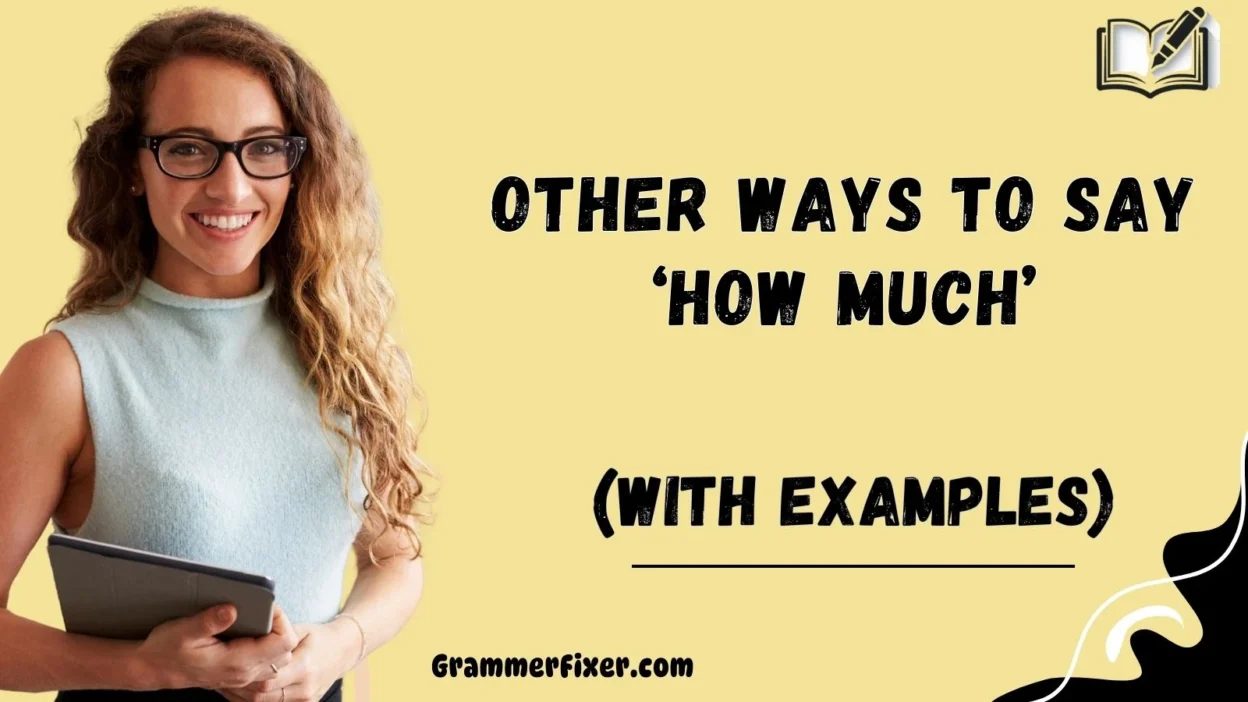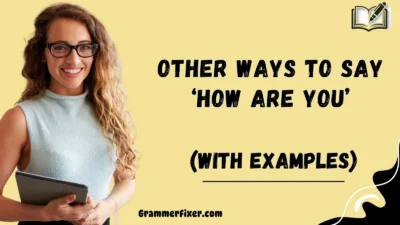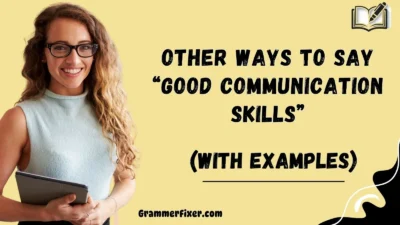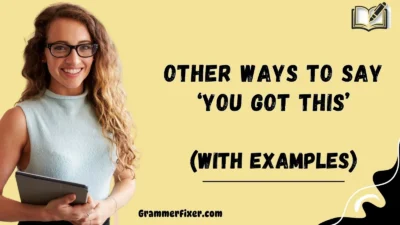Finding the right words to express ourselves can make all the difference in how our messages are received. A simple phrase like “how much” is often used in everyday conversations, from asking about prices to inquiring about quantity or value. But using it repeatedly can feel monotonous, impersonal, or blunt. That’s why exploring alternatives can help us sound more polished, professional, and considerate.
Whether you’re shopping, dining, negotiating, or simply curious, these options can add warmth and clarity to your communication.
What Does “How Much” Mean?
The phrase “how much” is commonly used to ask about the cost, quantity, or extent of something. It works in both casual conversations (e.g., in a restaurant) and professional settings (e.g., discussing project fees).
When to Use “How Much”?
You typically use “how much” when you need:
- Clarification about a price, amount, or fee
- To inquire about details in shopping, dining, or services
- To discuss budgets, estimates, or charges in professional environments
Pros or Cons
Pros:
- Simple and easy to understand
- Works in both casual and professional contexts
- Quick and direct
Cons:
- Can sound blunt or impersonal
- Lacks nuance in sensitive financial discussions
- Overuse makes conversations feel dull or repetitive
1. What’s the Price?
Meaning: A direct way of asking for the cost of an item or service.
Detailed Explanation: Instead of “how much,” saying “What’s the price?” sounds slightly more specific. It shows you are interested in the stated price rather than negotiating right away.
Scenario Examples:
- At a store: “What’s the price of this handcrafted necklace?”
- With a service provider: “Can you tell me what’s the price for your graphic design package?”
Best Use: Shopping, browsing markets, or asking a vendor.
Worst Use: Formal business negotiations or delicate financial discussions—it may sound too casual.
Tone: Neutral, polite, and clear.
2. Could You Share the Cost?
Meaning: A polite and professional way to ask about expenses.
Detailed Explanation: Adding “could you share” makes the question softer and more considerate. This phrasing is particularly useful in business emails or with service providers.
Scenario Examples:
- In an email: “Could you share the cost for catering 50 guests at our event?”
- With a contractor: “Could you share the cost of the full project phase?”
Best Use: Formal, professional, or service-oriented conversations.
Worst Use: Casual settings with friends or family—it might sound too stiff or formal.
Tone: Respectful, professional, courteous.
3. What’s the Total Amount?
Meaning: Asking for the complete sum owed or required.
Detailed Explanation: This alternative emphasizes the final total, which is useful when multiple items, services, or breakdowns are involved.
Scenario Examples:
- At a restaurant: “What’s the total amount for our meal?”
- With a freelancer: “What’s the total amount for this design project?”
Best Use: When confirming final costs before making payments.
Worst Use: When casually asking about the price of a single item—it may sound overly formal or heavy-handed.
Tone: Clear, precise, business-like.
4. What’s the Fee?
Meaning: A direct way of asking about a service charge or professional payment.
Detailed Explanation: The word “fee” usually relates to services, consultations, or memberships. It feels more professional than simply asking “how much.”
Scenario Examples:
- At a doctor’s office: “What’s the consultation fee for today’s visit?”
- With a tutor: “What’s the fee for weekly lessons?”
Best Use: Professional environments—medical, legal, educational, or consulting contexts.
Worst Use: Casual shopping or dining—asking “What’s the fee for this burger?” sounds unnatural.
Tone: Formal, professional, precise.
5. Could You Provide a Quote?
Meaning: Asking for an estimated cost before committing to a service.
Detailed Explanation: A quote is typically a formal written estimate given by a contractor, vendor, or freelancer. It works well when projects or services have variable pricing.
Scenario Examples:
- With a contractor: “Could you provide a quote for the home renovation project?”
- With a caterer: “Could you provide a quote for serving 50 guests?”
Best Use: Business, negotiations, projects, or event planning.
Worst Use: Quick, everyday interactions (like at a cafe)—it may sound overly official.
Tone: Professional, evaluative, respectful.
6. What’s the Rate?
Meaning: Asking about the price charged per unit of time, item, or service.
Detailed Explanation: The word “rate” suggests ongoing or hourly pricing rather than a one-time total. It’s common in freelance, rental, or consulting environments.
Scenario Examples:
- With a freelancer: “What’s the hourly rate for graphic design work?”
- With a rental company: “What’s the daily rate for this car?”
Best Use: Negotiating hourly or per-unit costs.
Worst Use: Shopping for one-off items—it can confuse a vendor.
Tone: Practical, business-oriented, neutral.
7. Could You Confirm the Price?
Meaning: Asking someone to verify or clarify the cost of something.
Detailed Explanation: Adding “confirm” makes it sound more careful and thoughtful. It implies that you want to double-check details before moving forward.
Scenario Examples:
- At a store: “Could you confirm the price of this laptop?”
- In a project email: “Could you confirm the price we agreed upon for the service?”
Best Use: Professional settings, negotiations, or detailed purchases.
Worst Use: Very casual chats—it might feel too formal or serious.
Tone: Polite, considerate, cautious.
8. What’s the Budget for This?
Meaning: Asking about the expected or allocated financial amount.
Detailed Explanation: This question shifts focus from your cost to the planned or available budget. It works well in collaborations or planning discussions.
Scenario Examples:
- At work: “What’s the budget for the marketing campaign?”
- With an event planner: “What’s the budget we should keep in mind for decorations?”
Best Use: Team projects, planning, proposals.
Worst Use: Asking in casual shopping or restaurants—it doesn’t fit.
Tone: Professional, strategic, forward-looking.
9. Can You Break Down the Charges?
Meaning: Asking for a detailed explanation of costs.
Detailed Explanation: Instead of asking for just the total, this shows interest in the structure of pricing (materials, labor, service fees).
Scenario Examples:
- With a contractor: “Can you break down the charges for the renovation?”
- With a hospital: “Can you break down the charges for the medical bill?”
Best Use: Detailed bills, negotiations, or invoices.
Worst Use: Casual shopping—imagine asking for a breakdown at a street vendor!
Tone: Inquisitive, clear, professional.
10. What’s the Estimated Cost?
Meaning: Asking for an approximate or predicted expense.
Detailed Explanation: Useful when the final cost isn’t fixed yet. It helps you understand a ballpark figure before committing.
Scenario Examples:
- With a contractor: “What’s the estimated cost of this phase of the project?”
- With a caterer: “What’s the estimated cost of a menu for 50 guests?”
Best Use: Early-stage discussions, planning, or budgeting.
Worst Use: Simple transactions—it may feel overly technical.
Tone: Professional, thoughtful, evaluative.
11. Could You Specify the Amount?
Meaning: A polite way to ask someone to give the exact figure.
Detailed Explanation: Using “specify” adds formality and shows you want clarity and precision, especially in professional or written communication.
Scenario Examples:
- In an email: “Could you specify the amount required for the next phase?”
- With a bank: “Could you specify the amount due this month?”
Best Use: Professional emails, contracts, invoices.
Worst Use: Casual conversations—it may sound too stiff with friends.
Tone: Formal, precise, clear.
12. What’s the Asking Price?
Meaning: The price set by the seller, often open to negotiation.
Detailed Explanation: Commonly used in real estate, markets, and bargaining settings. It’s more specific than “how much” because it acknowledges the seller’s starting point.
Scenario Examples:
- At a garage sale: “What’s the asking price for this antique lamp?”
- In real estate: “What’s the asking price for the property?”
Best Use: Bargains, negotiations, second-hand sales.
Worst Use: Restaurants or cafes—it doesn’t fit with menus.
Tone: Negotiable, business-like, practical.
13. Could You Advise on the Cost?
Meaning: A courteous way of asking for guidance about expenses.
Detailed Explanation: Adding “advise” makes the question softer, more respectful, and professional. It works when you’re seeking expert input.
Scenario Examples:
- With a lawyer: “Could you advise on the cost of preparing this contract?”
- With a doctor’s office: “Could you advise on the cost of a consultation?”
Best Use: Professional or advisory settings.
Worst Use: Asking at shops or markets—it can feel overly formal.
Tone: Polite, professional, considerate.
14. What’s the Charge?
Meaning: A straightforward way of asking what you need to pay for a service or product.
Detailed Explanation: This alternative feels direct but polite, making it suitable for many everyday interactions.
Scenario Examples:
- At a cafe: “What’s the charge for these two coffees?”
- At a salon: “What’s the charge for a haircut?”
Best Use: Casual service environments (cafes, salons, transport).
Worst Use: Formal negotiations—it may sound too simple.
Tone: Simple, polite, conversational.
15. What’s the Expense?
Meaning: Asking for the cost involved in something.
Detailed Explanation: The word “expense” implies a broader financial outlay and is often used in formal or evaluative discussions.
Scenario Examples:
- At work: “What’s the expense for adding this feature to the project?”
- In personal planning: “What’s the expense for a weekend trip?”
Best Use: Professional and evaluative contexts.
Worst Use: Street shopping or casual dining—it may sound odd.
Tone: Formal, thoughtful, evaluative.
16. Could You Clarify the Price?
Meaning: Asking politely for clarification of cost details.
Detailed Explanation: This works when you’ve been given a figure but want confirmation. Adding “clarify” makes it sound respectful and careful.
Scenario Examples:
- With a vendor: “Could you clarify the price for the premium package?”
- With a cashier: “Could you clarify the price of this item on sale?”
Best Use: When double-checking details.
Worst Use: Asking the very first time—it might feel redundant.
Tone: Courteous, careful, respectful.
17. What’s the Value?
Meaning: Asking about the worth or importance of something in monetary or qualitative terms.
Detailed Explanation: This is broader than just “cost”—it hints at perceived worth, not just the number.
Scenario Examples:
- At a market: “What’s the value of this handcrafted piece?”
- In business: “What’s the value we gain from this investment?”
Best Use: Discussing worth, investment, or art pieces.
Worst Use: Casual shopping (like groceries).
Tone: Thoughtful, evaluative, professional.
18. Could You Give Me a Ballpark Figure?
Meaning: Asking for an approximate or rough estimate.
Detailed Explanation: The phrase “ballpark figure” is informal but widely used in negotiations, projects, and planning when exact numbers aren’t available.
Scenario Examples:
- With a contractor: “Could you give me a ballpark figure for the renovation?”
- With a caterer: “Could you give me a ballpark figure for 50 guests?”
Best Use: Informal professional discussions, early estimates.
Worst Use: Formal written proposals—it may feel too casual.
Tone: Informal, practical, flexible.
19. What’s the Damage?
Meaning: A light-hearted or humorous way of asking about the total bill.
Detailed Explanation: This is slangy and casual, used when joking with friends or in relaxed situations.
Scenario Examples:
- At a restaurant with friends: “Alright, what’s the damage for tonight’s dinner?”
- After shopping: “So, what’s the damage on my card?”
Best Use: Casual, joking conversations with friends.
Worst Use: Professional or formal contexts—it will sound unprofessional.
Tone: Playful, humorous, casual.
20. Could You Outline the Costs?
Meaning: Asking for a structured breakdown of expenses.
Detailed Explanation: This is especially useful when dealing with multiple charges or project-based fees. It shows you want clarity and organization.
Scenario Examples:
- With a contractor: “Could you outline the costs for each project phase?”
- With an event planner: “Could you outline the costs for catering, decorations, and music?”
Best Use: Professional environments, detailed invoices, negotiations.
Worst Use: Casual shopping or dining.
Tone: Professional, organized, respectful.
21. How Much Does It Cost?
Meaning: A classic and straightforward way to inquire about price or expense.
Detailed Explanation: This is very direct and universally understood, suitable for most settings but can feel blunt if overused.
Scenario Examples:
- At a store: “How much does this backpack cost?”
- With a service provider: “How much does your hourly consultation cost?”
Best Use: Everyday purchases, casual interactions.
Worst Use: Formal business or email communication—it may seem too abrupt.
Tone: Neutral, direct, simple.
22. Could You Break Down the Fees?
Meaning: Asking for a detailed itemized explanation of charges.
Detailed Explanation: Using “break down” signals that you want clarity about each component of the cost, which is very helpful for projects, invoices, or services.
Scenario Examples:
- With a contractor: “Could you break down the fees for materials and labor?”
- With a hospital: “Could you break down the fees for this procedure?”
Best Use: Professional, service-based, or multi-item expenses.
Worst Use: Casual shopping—it may come across as overly detailed.
Tone: Clear, professional, thorough.
23. What’s the Per-Unit Price?
Meaning: Asking for the cost of one individual item.
Detailed Explanation: Useful when buying multiple units to understand price per item instead of the total.
Scenario Examples:
- At a store: “What’s the per-unit price for these notebooks?”
- In a market: “What’s the per-unit price for each apple?”
Best Use: Bulk purchases, shopping, or product comparison.
Worst Use: Single-item purchases—it’s unnecessary.
Tone: Practical, clear, evaluative.
24. Can You Confirm the Estimated Fee?
Meaning: A professional way to verify an estimated cost.
Detailed Explanation: Combining “confirm” with “estimated fee” makes it clear that you want accuracy before committing.
Scenario Examples:
- With a freelancer: “Can you confirm the estimated fee for this design project?”
- With a caterer: “Can you confirm the estimated fee for the menu?”
Best Use: Project planning, professional discussions, and service contracts.
Worst Use: Casual daily purchases—it may seem unnecessarily formal.
Tone: Polite, professional, precise.
25. How Much Is Required?
Meaning: Asking for the amount necessary to complete a task, project, or purchase.
Detailed Explanation: This alternative is polite and evaluative, emphasizing necessity rather than casual curiosity.
Scenario Examples:
- For a fundraiser: “How much is required to meet our goal?”
- In a project: “How much is required to complete this phase?”
Best Use: Planning, budgeting, formal discussions.
Worst Use: Casual shopping or dining—it can sound too serious.
Tone: Thoughtful, professional, clear.
26. Could You Advise the Estimated Charges?
Meaning: Asking someone to guide you on the anticipated cost.
Detailed Explanation: Using “advise” makes the question polite and consultative, suitable for professional or technical contexts.
Scenario Examples:
- With a contractor: “Could you advise the estimated charges for this project phase?”
- With a caterer: “Could you advise the estimated charges for 50 guests?”
Best Use: Professional, planning, or advisory conversations.
Worst Use: Casual everyday purchases—it may feel too formal.
Tone: Respectful, professional, considerate.
27. What’s the Overall Cost?
Meaning: Asking for the total amount for all items or services combined.
Detailed Explanation: Using “overall” signals that you want the complete picture, not just individual prices.
Scenario Examples:
- For an event: “What’s the overall cost including catering, decorations, and entertainment?”
- With a vendor: “What’s the overall cost of all items in the order?”
Best Use: Planning, project management, combined purchases.
Worst Use: Single-item transactions—it’s unnecessary.
Tone: Clear, practical, professional.
28. Could You Share the Price Details?
Meaning: A polite way to ask for all relevant pricing information.
Detailed Explanation: “Price details” shows you want a comprehensive view, including breakdowns, variations, and estimates.
Scenario Examples:
- With a contractor: “Could you share the price details for each stage of construction?”
- With a caterer: “Could you share the price details for each dish?”
Best Use: Business discussions, multi-item services, planning.
Worst Use: Simple shopping or casual asks—it may sound too elaborate.
Tone: Polite, organized, professional.
29. Can You Quote Me the Cost?
Meaning: Requesting a formal estimate or statement of price.
Detailed Explanation: Using “quote me” is common in business, service, and project contexts, making it more formal than “how much.”
Scenario Examples:
- With a freelancer: “Can you quote me the cost for this logo design?”
- With an event planner: “Can you quote me the cost for decorating the venue?”
Best Use: Formal projects, proposals, and negotiations.
Worst Use: Casual purchases or small everyday items—it may sound overkill.
Tone: Professional, precise, respectful.
30. What’s the Approximate Price?
Meaning: Asking for a rough estimate of cost without requiring exact numbers.
Detailed Explanation: This is ideal when exact figures aren’t available but you need a ballpark idea.
Scenario Examples:
- For a service: “What’s the approximate price for a full-day photography session?”
- With a vendor: “What’s the approximate price for this set of handcrafted items?”
Best Use: Early planning, casual professional inquiries, budgeting.
Worst Use: When precise numbers are required—it may be too vague.
Tone: Practical, flexible, polite.
Conclusion
Choosing the right words to ask “how much” can transform a simple inquiry into a thoughtful, considerate, and professional interaction. While the classic phrase is widely understood, it can sometimes feel blunt, monotonous, or impersonal, especially in professional or delicate contexts.
Exploring alternatives—ranging from “Could you share the cost?” to “What’s the ballpark figure?” or even light-hearted options like “What’s the damage?”—allows you to match your tone to the situation, whether casual, formal, or business-oriented. Each alternative has its best use, worst use, and unique tone, helping you communicate clearly, politely, and effectively.



